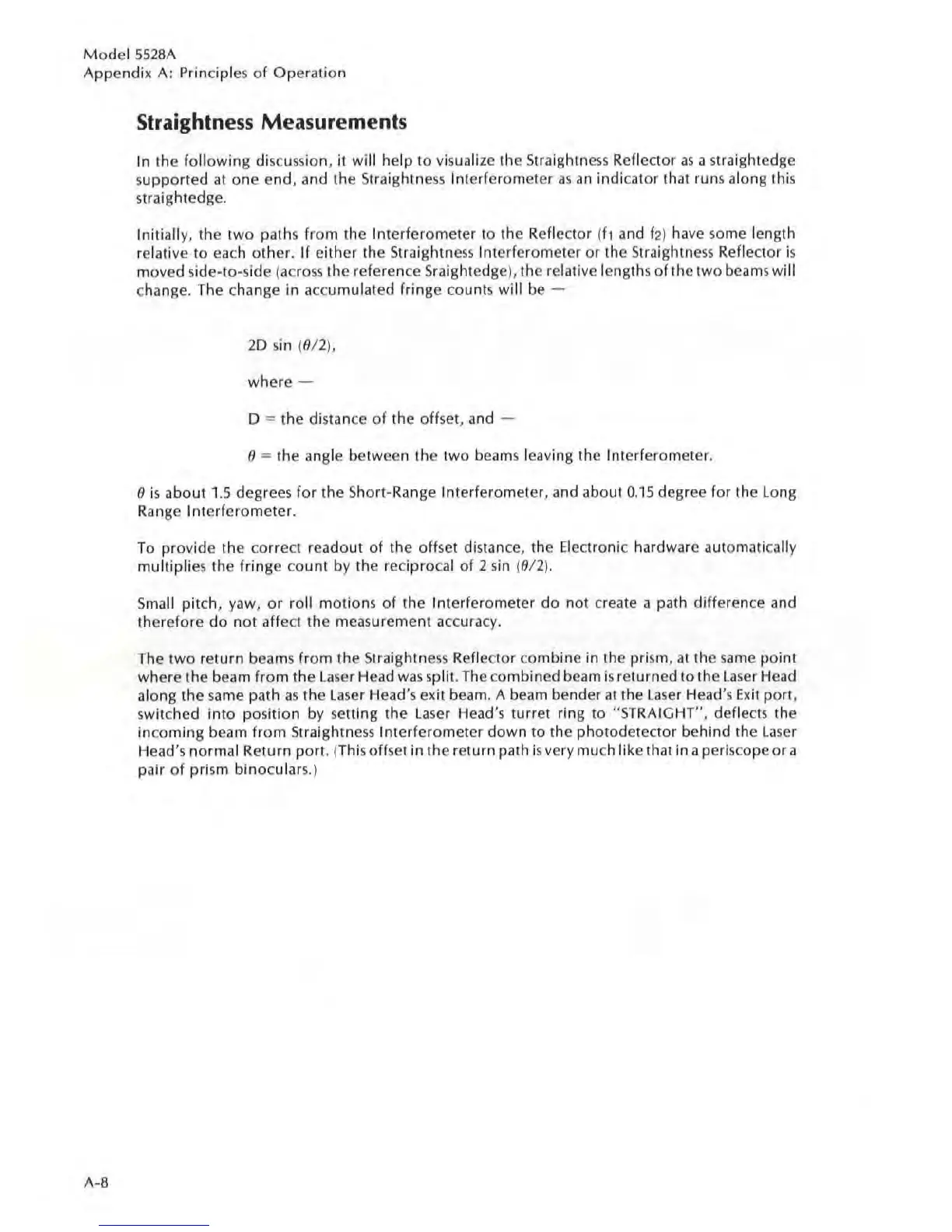Model
SS28A
Appendix
A: Principles
of
Operation
A-a
Straightness Measurements
In the
following
di
sc
u
ss
ion
, it will
help
to visualize the Straightness R
ef
lector
as
a straightedge
s
upported
at
one
e
nd
, and the Straightness
Interferometer
as
an
indicator that runs along this
straightedge.
Initially, the
two
paths
from
the
Interferometer
to the Reflector
(fl
and f
2)
have
so
me length
relative to
each
other.
If
either
the Straightness
Interferometer
or
the Straightness Reflector is
m
oved
side-to-side (across the reference Sraightedge), the relative lengths of the
two
beams will
change. The change
in
accumulated fringe counts will be -
20
s
in
(0
/2),
where
-
D =
the
di
stance
of
the offset, and -
0
""
the angle between the
two
beams leaving the I
nterferometer
.
o
is
about 1
.5
deg
r
ees
for
the Short-Range Interferometer, and about 0.15 degree
for
the
long
Range I
nterferometer
.
To
provide
the
correct
readout
of
the offset distance, the El
ectronic
hardware automatically
mul
tiplie
s the
fringe
count
by the reciprocal
of
2 sin (012).
Small
pitch,
yaw,
or
roll
motions
of
the I
nterferometer
do
not
create a path
differen
ce
and
therefore
do
not
affect the measurement accuracy.
The
two
r
eturn
beams
from
the Straightness Reflec
tor
combine
in the prism,
at
the same
point
where
Ihe
beam
from
the
la
se
r Head
was
sp
lil. The
combined
beam
is
returned 10 the laser Head
along the same path as the
laser
Head
's
eKit beam. A beam bender al the
Laser
Head
's
Exit
port,
switched
into
pOSition by setting the laser Head's turret ring to "S
TRA
IGH
T",
deflects the
incoming
beam
from
Straightness
Interferometer
down
to the
photodetector
behind
the
la
ser
Head
's
normal
Return
port
. (This offset in the return path is very much like thai in a periscope
or
a
pair
of
prism
binocu
l
ars.
)

